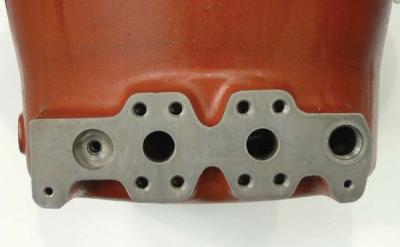
In the world of corrosion control, preventing rust is always the best option. Unfortunately, existing rust can be found in every industry, at almost any plant or jobsite. Sometimes rust takes place only after months or years of shipping or storing metals in harsh conditions. Other times, it occurs within minutes of a part rolling off the assembly line. While sandblasting, water blasting, and grinding are commonly used for rust removal, these techniques can be cost-prohibitive, labor-intensive, or limited by location. When this is the case, Cortec® biobased rust removers offer an exciting alternative to sandblasting and other forms of mechanical rust removal to restore critical equipment and components to usable condition.
Cortec® rust removers VpCI®-422 and VpCI®-423 are relatively easy to use and are safer than many other rust removal chemicals on the market due to their lower acidity and their large percentage of ingredients commonly used in the food industry. Both products contain 91% USDA certified biobased content and are NSF registered as A3 acid cleaners in the NSF Nonfood Compounds Registration Program.
Contact Details
Related Glossary Terms
- grinding
grinding
Machining operation in which material is removed from the workpiece by a powered abrasive wheel, stone, belt, paste, sheet, compound, slurry, etc. Takes various forms: surface grinding (creates flat and/or squared surfaces); cylindrical grinding (for external cylindrical and tapered shapes, fillets, undercuts, etc.); centerless grinding; chamfering; thread and form grinding; tool and cutter grinding; offhand grinding; lapping and polishing (grinding with extremely fine grits to create ultrasmooth surfaces); honing; and disc grinding.

